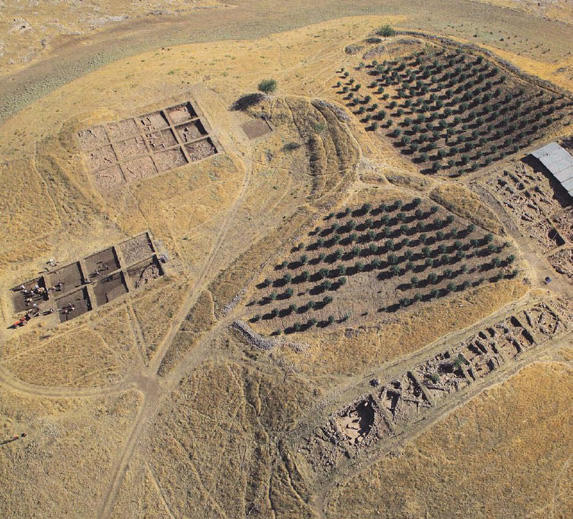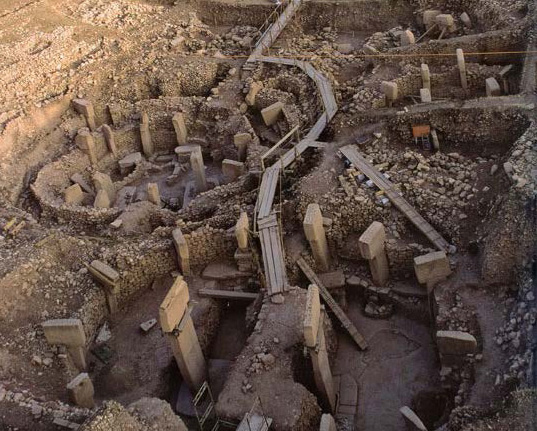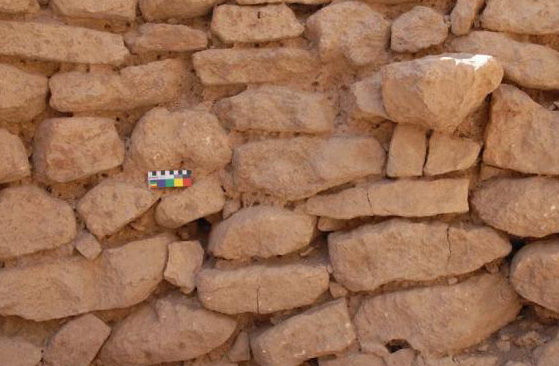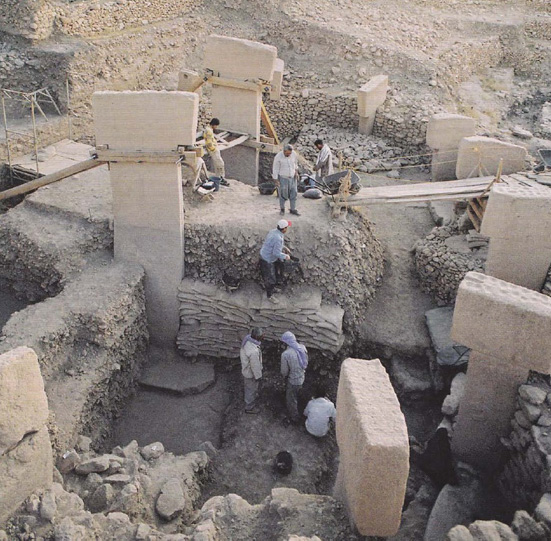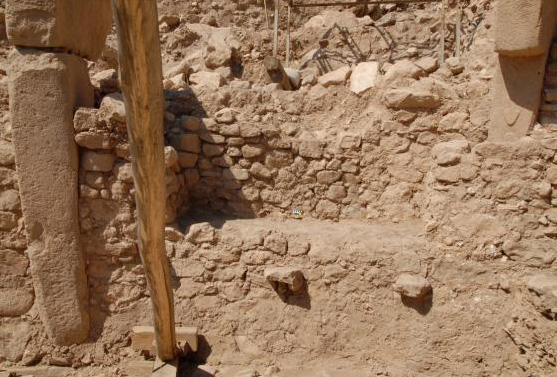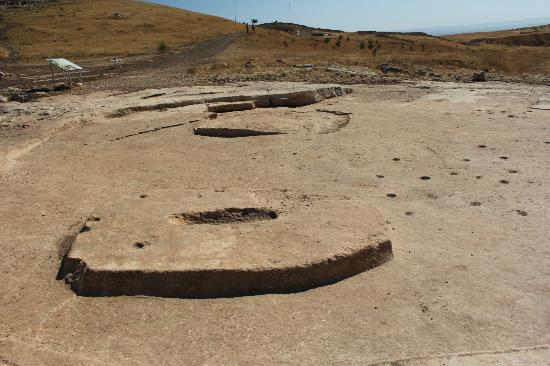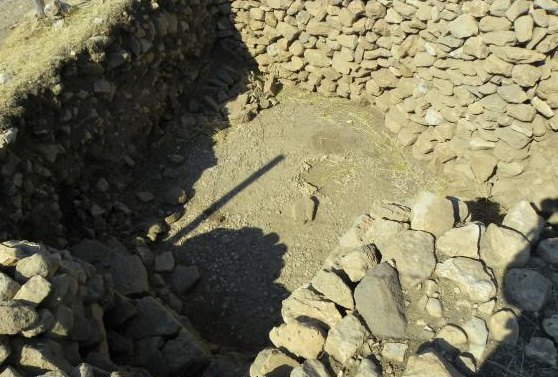It looks like you're using an Ad Blocker.
Please white-list or disable AboveTopSecret.com in your ad-blocking tool.
Thank you.
Some features of ATS will be disabled while you continue to use an ad-blocker.
share:
I was having a look round for any updates on Gobekli Tepe, the last paper the lead archaeologist Schmidt produced was around 2010 as far as i'm
aware, but i did come across this 2011 report i hadn't seen previously, which is interesting as it discusses mortar, plaster and concrete usage in
the constructions.
First Mortar and Plaster Documentation Gobekli Tepe
The paper considers a deterioration in methodologies applied suggesting the most advanced are seen at the site beginings, which of course presents a problem as these are the oldest known constructions, if they cannot be seen to have developed elsewhere at an earlier date one can only surmise they were introduced from an unknown source.
They seem to have had then considerable ingenuity in the production of mortars, of good enough quality to endure.
The evidence for usage of concrete in terrazo floors is interesting, depressions in bedrock show traces of mixed concrete and water was artificially introduced onto the site to facilitate production.
So anyway i found this all very interesting and hope for more papers to be released soon, as seen in the first photo excavations now cover quite a few areas of the overall site.
First Mortar and Plaster Documentation Gobekli Tepe
Professor Schmidt points out, the earliest part of the Göbekli Tepe site may represent the peak of Stone Age technology which then declines towards the end of the site’s life as the introduction of agricultural activity develops. This would mean that Göbekli Tepe is not the start of a stage of human development but in fact the end, implying that these advanced stone technologies started at a much earlier time
The paper considers a deterioration in methodologies applied suggesting the most advanced are seen at the site beginings, which of course presents a problem as these are the oldest known constructions, if they cannot be seen to have developed elsewhere at an earlier date one can only surmise they were introduced from an unknown source.
While the large T-shaped stones seem to stand free and are occasionally socketed into shallow sockets in the bedrock, ccasionally consolidated by flint and chert wedges or chinking stones, between the monoliths are mortared, rough stone walls which support the monoliths in several techniques and also divide spaces within the patterns of the position of monoliths in each
enclosure.
The mortars across the site vary in colour, granulometry and composition and this may be interpreted in several ways. In some positions the walls act as buttressing walls against the hillside slope, and in these the “strength” of the mortar, especially the clay proportion, may reflect this.
Mortars throughout the site propose an extraordinary level of sophistication in the understanding of their use. The attachment of mortar to stone is generally significantly well achieved.
Generally when mortar is used in any masonry structure, the observer would expect to see micro cracks and cleavage features related to shrinkage and mechanical or vibrational activity over time. At Göbekli Tepe the attachment between mortar and stone remains intimately close and strong
They seem to have had then considerable ingenuity in the production of mortars, of good enough quality to endure.
In various positions of the walls there is occasional evidence of the mortars extending to use of plasters. Those examined by the author were unsophisticated plasters roughly applied by hand and “daubed” unevenly over the wall. There are small marks in the daubed surface that the author interprets as vestigial remains of small soft finger marks.
The evidence for usage of concrete in terrazo floors is interesting, depressions in bedrock show traces of mixed concrete and water was artificially introduced onto the site to facilitate production.
While there is no evidence of lime burning technology, there exists the strong possibility of soft marly limestone minerals (Marl is normally in the index 5-15% clays and 85-95% carbonates), in the climatic conditions, contemporary to construction, of marshy ground in the forested plains below. These soft marls when mixed with sands and aggregates would produce a type of concrete on drying, and this may have been the source of the terrazzo floors. Clearly more research is needed into this possibility of the use of concretes at such an early date.
Göbekli Tepe lies in a limestone region, and around the limestone monuments in the circles of the archaeological site is a andscape profoundly changed by the working of limestone, stripping the surface off the natural limestone pavements, with wasted limestone rocks lying on the surface. Klaus Schmidt points out that this is not a natural landscape but a cultural landscape
converted through human activity.
There is no evidence of burning as part of the quarrying activity, but the supply of water artificially brought to the quarries and to the Göbekli hill is strongly in evidence.
So anyway i found this all very interesting and hope for more papers to be released soon, as seen in the first photo excavations now cover quite a few areas of the overall site.
Great thread. I've been saying for years that I think a lot of those ancient megalithic sites were using a form of concrete. My biggest reason for
that theory is when you have the megalithic stone walls that will be opposite each other, but yet have the exact same shape to the uneven stones, and
the same pattern of layout. Essentially, a mirror image of each other. To me that shows the use of forms and having a concrete like substance poured
into it.
reply to post by MadhatterTheGreat
It's astonishing really, a huge construction project involving mortar, plaster and concrete, high quality stone cutting and construction methodology by hunter gatherers!
I don't think that paper is well known, it's more a request for funding rather than information released for public consumption.
It's astonishing really, a huge construction project involving mortar, plaster and concrete, high quality stone cutting and construction methodology by hunter gatherers!
I don't think that paper is well known, it's more a request for funding rather than information released for public consumption.
edit on Kam33176vAmerica/ChicagoTuesday1831 by Kantzveldt because: (no reason given)
a definite s&f. Thanks for posting this! I always find these old structures facinating.
I don't care what historians say, ancient people's had more tech than what we give them credit for...
I don't care what historians say, ancient people's had more tech than what we give them credit for...
reply to post by andr3w68
You're welcome, there are very serious questions raised by this in that there is no evidence for previous construction in stone at this date 12,000 years ago, and yet they're going at it on a huge scale with mortar and concrete and not even living there!
You're welcome, there are very serious questions raised by this in that there is no evidence for previous construction in stone at this date 12,000 years ago, and yet they're going at it on a huge scale with mortar and concrete and not even living there!
Kantzveldt
reply to post by andr3w68
You're welcome, there are very serious questions raised by this in that there is no evidence for previous construction in stone at this date 12,000 years ago, and yet they're going at it on a huge scale with mortar and concrete and not even living there!
Gypsum and lime were being processed at least as early as 10,000 BC and used in the construction of domestic and communal buildings. Qermez Dere is one of the principle sites, a small settlement of subterranean dwellings, built from stone and plastered with processed gypsum were excavated in the '80s, evidence suggests that both floors and walls were treated in this way. There are other similar sites in region demonstrating an exponential spread of the technology and indicating a continuity through to the dwelllings at Nevali Cori and Catal Hoyuk, as well as at Gobekli Tepe. Steven Mithen outlines the use of plaster at Qermez Dere and Gobekli Tepe, and draws comparisons of those technique, as well as other cultural similarities, in 'After the Ice' published in 2003.
Given that the terrazzo floors at Gobekli Tepe (circa 9000BC) predate pottery development in the region by about 1000 years, I personally think that it can be seen as a somewhat natural appendage to creating stone hearths, and the realisation that some stones are both transformed and can more easily split into building blocks by application to fire. Metal processing was probably, originally, derived in much the same way. Once the initial discovery is made, it merely takes experimental trial and error to refine it, and then utilising mnemonic rituals in order to pass the skill onto others. Once we had learnt one fire based technology, all others, including ceramic firing, quickly followed suit as our natural curiousity and love of innovation took over.
ETA: This pdf details a number of sites, both predating and contemporary to Gobekli Tepe, all using plaster in some shape or form. Concrete of course merely indicates that the base or binding material, gypsum/lime, has been combined with a aggregate to add strength and durability.
books.google.co.uk... hl=en&sa=X&ei=G8coU6OyJpKY0QWXioDgAg&ved=0CC4Q6AEwAA#v=onepage&q=qermez%20dere%20plaster%20use&f=false
Either way, as you can see, there is a clear and progressive development of the technology extending to long before GT.
edit on 18-3-2014 by
KilgoreTrout because: (no reason given)
reply to post by KilgoreTrout
I think that's just taking the latter end of the suggested time frame for Gobekli Tepe and the earliest for the other sites , whereas there is considerable overlap, Gobekli Tepe being the most highly developed site suggests to me the prime source for such developments, there is not only usage of plaster but adaptability in mortar and concrete as well as the highly ambitious megaliths, so i would consider other small settlements of the period as relating to cultural transmission.
Also of course the site is far from fully excavated and it remains to be seen what the earliest phase was.
I think that's just taking the latter end of the suggested time frame for Gobekli Tepe and the earliest for the other sites , whereas there is considerable overlap, Gobekli Tepe being the most highly developed site suggests to me the prime source for such developments, there is not only usage of plaster but adaptability in mortar and concrete as well as the highly ambitious megaliths, so i would consider other small settlements of the period as relating to cultural transmission.
Also of course the site is far from fully excavated and it remains to be seen what the earliest phase was.
Kantzveldt
I think that's just taking the latter end of the suggested time frame for Gobekli Tepe and the earliest for the other sites , whereas there is considerable overlap...
I was going by the radio-carbon dating of the floors...
Layer II is assigned to Pre-Pottery Neolithic B (PPNB). The several adjoining rectangular, doorless and windowless rooms have floors of polished lime reminiscent of Roman terrazzo floors. Carbon dating has yielded dates between 8800 and 8000 BC
en.wikipedia.org...
Even if we compare that to the latest occupation of Qermez Dere we find them to be contemporary to each other, which in itself is astounding, given the relative geopgraphical distance between the sites.
Kantzveldt
...Gobekli Tepe being the most highly developed site suggests to me the prime source for such developments, there is not only usage of plaster but adaptability in mortar and concrete as well as the highly ambitious megaliths, so i would consider other small settlements of the period as relating to cultural transmission.
That would be contrary to evidence, both in terms of the specific area, as well as megalithic sites globally. Gobekli Tepe's construction obviously involved the drawing together of several social groups from a wide geographical area. There have been no contemporary settlement sites found in the immediate vicinity of GT, seasonal or otherwise. Use of plaster, often mixed with aggregates to form concrete and mortar, as a technology, is found throughout Iraq, Jordan and Syria roughly contemporary, but most likely preceding, the period. While the processes may be considered refined at GT they clearly developed elsewhere and this is increasingly supported by the archaeology. As you yourself pointed out from the report that you sourced for the thread...
Professor Schmidt points out, the earliest part of the Göbekli Tepe site may represent the peak of Stone Age technology which then declines towards the end of the site’s life as the introduction of agricultural activity develops. This would mean that Göbekli Tepe is not the start of a stage of human development but in fact the end, implying that these advanced stone technologies started at a much earlier time.
Which led you to jump to the following conclusion...
Kantzveldt
The paper considers a deterioration in methodologies applied suggesting the most advanced are seen at the site beginings, which of course presents a problem as these are the oldest known constructions, if they cannot be seen to have developed elsewhere at an earlier date one can only surmise they were introduced from an unknown source.
I merely pointed out that they can be seen to have developed elsewhere at an earlier date. Your 'unknown source' is now known.
Kantzveldt
Also of course the site is far from fully excavated and it remains to be seen what the earliest phase was.
That is indeed very true, but as I have pointed out the concrete floors in question, and currently under discussion, are radio-carbon dated to between 8000 and 8800 BC.
I always expect to find regression rather than progression over time among these very ancient sites because of a completely different
understanding of History and the descent of mankind over millennia. Why the "modern Academia" is continually surprised and "confronted with
problems" over this, after having discovered numerous other cultures that began at their peak "from the beginnings", I don't know. Maybe its not a
conspiracy, maybe they're just dumb as a rock.
edit on 2014 by Skyfloating because: (no reason given)
Skyfloating
I always expect to find regression rather than progression over time among these very ancient sites because of a completely different understanding of History and the descent of mankind over millennia. Why the "modern Academia" is continually surprised and "confronted with problems" over this, after having discovered numerous other cultures that began at their peak "from the beginnings", I don't know. Maybe its not a conspiracy, maybe they're just dumb as a rock.
By 'they', I presume you mean 'we'...or are you, as I have long suspected, a member of another species altogether?
I think it far more straight forward, in that we forget so quickly the pains taken to develop a technological breakthrough, or were not involved in the developmental process and just got the finished product. As imaginative and creative we are as a species, we also have a terrible tendency towards taking things for granted.
The 'peak' examples, as you put them, tend to represent the bells and whistles end of archaeological discovery, and therefore are far easy to publicise and attract funding to. The more mundane, domestic, day to day stuff, is marginalised and under invested in, remaining largely in the shadows and thereby allows for the impression that the technological progression 'just happened' and then evaporated.
reply to post by KilgoreTrout
I don't see how usage at other relatively wide ranging roughly contemporary sites for the period gives a source for these technologies, as they are unlikely to have all spontaneously developed such but are part of a greater regional development, so in my opinion none of them are of sufficient ambition and scale to have required innovation, whereas Gobekli Tepe certainly does, if you suggest then an earlier known source i think you should be specific in saying where and when rather than bringing any number of outlying sites into consideration.
The specific dates for the Terrazzo floors at Gobekli Tepe thus far excavated could indeed be later than found at other outlying sites, but as i suggested they aren't necessarily the oldest core area of the site, and repairs and additions were made to the site over a 1500 year period, i don't think there is a case can be made for any of those outlying sites pre-dating general construction at Gobekli Tepe.
A more important issue is the usage of mortar/concrete on a truly industrial scale in the construction of the walls, the likes of which were not seen again until the Roman period, and why this has not been made widely known, the Wiki page on Mortar for example states first development was many thousands of years later, the World Heritage assessment paper i sourced was not intended for public consumption, Schmidt never seems to have got around to mentioning this himself, which suggests to me that this is a problematic issue and as yet beyond contextualization and thus kept quiet.

The mortars used at Gobleki Tepe by the way did not involve fire/burning methodology as you suggested with the hearth stone imaginings.
I don't see how usage at other relatively wide ranging roughly contemporary sites for the period gives a source for these technologies, as they are unlikely to have all spontaneously developed such but are part of a greater regional development, so in my opinion none of them are of sufficient ambition and scale to have required innovation, whereas Gobekli Tepe certainly does, if you suggest then an earlier known source i think you should be specific in saying where and when rather than bringing any number of outlying sites into consideration.
The specific dates for the Terrazzo floors at Gobekli Tepe thus far excavated could indeed be later than found at other outlying sites, but as i suggested they aren't necessarily the oldest core area of the site, and repairs and additions were made to the site over a 1500 year period, i don't think there is a case can be made for any of those outlying sites pre-dating general construction at Gobekli Tepe.
A more important issue is the usage of mortar/concrete on a truly industrial scale in the construction of the walls, the likes of which were not seen again until the Roman period, and why this has not been made widely known, the Wiki page on Mortar for example states first development was many thousands of years later, the World Heritage assessment paper i sourced was not intended for public consumption, Schmidt never seems to have got around to mentioning this himself, which suggests to me that this is a problematic issue and as yet beyond contextualization and thus kept quiet.

The mortars used at Gobleki Tepe by the way did not involve fire/burning methodology as you suggested with the hearth stone imaginings.
edit on Kam33177vAmerica/ChicagoWednesday1931 by Kantzveldt because: (no reason given)
reply to post by Skyfloating
Academia laid out their 'stall' concerning teaching us about the past years ago and they are stubborn to change their views, especially with a slow tidal wave of new information approaching their 'stall'. I expect new academics can't wait to start rewriting some of our past with more open minds and no egos to protect.
Academia laid out their 'stall' concerning teaching us about the past years ago and they are stubborn to change their views, especially with a slow tidal wave of new information approaching their 'stall'. I expect new academics can't wait to start rewriting some of our past with more open minds and no egos to protect.
reply to post by Kantzveldt
I did supply sources.
Wiki is hardly the be-all and end-all, and is limited by the information of those who write and edit the pages. Whoever they are, given the huge gaps of information in the page in question, should read more up-to-date books and studies.
Malta, provides another example, which your wiki page has clearly overlooked.
www.everythingiselectric.com...
Your source is a progress report, not secret, but obviously meant for those with a wider awareness of archaeology, and as it clearly states, mortar, cement and plaster are subject to weather erosion, hence why it is only found in sites that have been buried, like those at GT and those detailed in the sources that I provided earlier.
The large scale of GT was not the point that I raised nor one I disputed, simply the evidence of technological development. The fact that Schmidt raises the lack of firing evidence at the site indicates that the raw materials, which need to be fired, particularly in the case of gypsum/plaster, were potentially brought in from elsewhere...[I]that[/I] is why Schmidt notes it...because the absence [I]is[/I] noteworthy.
I did supply sources.
Wiki is hardly the be-all and end-all, and is limited by the information of those who write and edit the pages. Whoever they are, given the huge gaps of information in the page in question, should read more up-to-date books and studies.
Malta, provides another example, which your wiki page has clearly overlooked.
www.everythingiselectric.com...
Your source is a progress report, not secret, but obviously meant for those with a wider awareness of archaeology, and as it clearly states, mortar, cement and plaster are subject to weather erosion, hence why it is only found in sites that have been buried, like those at GT and those detailed in the sources that I provided earlier.
The large scale of GT was not the point that I raised nor one I disputed, simply the evidence of technological development. The fact that Schmidt raises the lack of firing evidence at the site indicates that the raw materials, which need to be fired, particularly in the case of gypsum/plaster, were potentially brought in from elsewhere...[I]that[/I] is why Schmidt notes it...because the absence [I]is[/I] noteworthy.
Wow amazing!
I wonder if the sands that covered Gobekli Tepe, for 100's if not 1000's of years, acted as a desiccant and kept the mortar super dry and in pristine condition.
Water corrodes and erodes because it is the universal solvent!
Also keeping it away from the suns UV rays and daily heating and cooling may have prevented thermal cracking of the mortar taking place.
And finally maybe all that sand acted as a surrounding buffer acting as both support and suspension during EQ's, again allowing the mortar to be far less stressed than it would be if it was continuously unsupported during its antediluvian lifespan.
Now as to why was it abandoned and covered up, either by design and purpose OR by default and via mother natures encroaching windy ways [sand can be insidious in this regard], is there any indications that the owners intended on coming back for it as it seems very well preserved indeed.
As for the water being specifically imported into Gobekli Tepe from further afield, I wonder if that was for construction purposes mainly i.e. the mortar and plaster etc. OR was it for turning into beer for human consumption [water, from god knows where is hazardous to ones health, where as beer has the healthy effects of the alcohol acting as a natural antiseptic antibacterial yeast byproduct by killing of any nasty things in the water before one consumes it].
Now that the shifting sands of time have been manually shifted I expect to see a decline in the quality of the exposed structure as weathering and erosion start to take there toll again.
As for ancient man knowing about mortar, IMO it is not a huge jump from mud and water and I am sure that ancient man knew heaps about pottery and ceramics and therefor I think it is quite natural that they came up with cement and concrete since it was a meeting place for people of diverse origins and a melting pot of ideas and crossroads for trade similar to how Stone henge is in the UK.
So I'd agree that it seems imported technology, but from who and where and did they export that technology elsewhere?
Last but not least, why did they build it there and not somewhere closer to water for example?
Whatever the reasons they must have been fantastic to invest such time and effort and skill and resources for supposedly a ragtag bunch of nomadic wandering tribes with seemingly nothing more than that in common!
Maybe the T shaped stones in a circle are a landing pad for the Gods flying saucer and hence why the orientate towards the stars in heaven above?
I wonder if the sands that covered Gobekli Tepe, for 100's if not 1000's of years, acted as a desiccant and kept the mortar super dry and in pristine condition.
Water corrodes and erodes because it is the universal solvent!
Also keeping it away from the suns UV rays and daily heating and cooling may have prevented thermal cracking of the mortar taking place.
And finally maybe all that sand acted as a surrounding buffer acting as both support and suspension during EQ's, again allowing the mortar to be far less stressed than it would be if it was continuously unsupported during its antediluvian lifespan.
Now as to why was it abandoned and covered up, either by design and purpose OR by default and via mother natures encroaching windy ways [sand can be insidious in this regard], is there any indications that the owners intended on coming back for it as it seems very well preserved indeed.
As for the water being specifically imported into Gobekli Tepe from further afield, I wonder if that was for construction purposes mainly i.e. the mortar and plaster etc. OR was it for turning into beer for human consumption [water, from god knows where is hazardous to ones health, where as beer has the healthy effects of the alcohol acting as a natural antiseptic antibacterial yeast byproduct by killing of any nasty things in the water before one consumes it].
Now that the shifting sands of time have been manually shifted I expect to see a decline in the quality of the exposed structure as weathering and erosion start to take there toll again.
As for ancient man knowing about mortar, IMO it is not a huge jump from mud and water and I am sure that ancient man knew heaps about pottery and ceramics and therefor I think it is quite natural that they came up with cement and concrete since it was a meeting place for people of diverse origins and a melting pot of ideas and crossroads for trade similar to how Stone henge is in the UK.
So I'd agree that it seems imported technology, but from who and where and did they export that technology elsewhere?
Last but not least, why did they build it there and not somewhere closer to water for example?
Whatever the reasons they must have been fantastic to invest such time and effort and skill and resources for supposedly a ragtag bunch of nomadic wandering tribes with seemingly nothing more than that in common!
Maybe the T shaped stones in a circle are a landing pad for the Gods flying saucer and hence why the orientate towards the stars in heaven above?
KilgoreTrout
By 'they', I presume you mean 'we'...or are you, as I have long suspected, a member of another species altogether?
By "they" I am referring to a specific class of archaeologists and historians who are dull. I`m referring to the people who promised that the Sumerian settlements 6000 years old were the "oldest in the world" and are now claiming these in Turkey of 12 000 years are "the oldest in the world".
As for the idea of regression: The Ancient Egyptians "began" as a full blown high civilization and regressed from there. Same with many other ancient cultures.
The reason? They were not a development, they were a legacy.
Legacy from where? Pre-Flood Atlantis.
This also make me wonder about other ancient sites. Could it be that some of these monuments were actually poured into place? The blocks of the Great
Pyramid of Giza almost look like artificially made cement.
reply to post by ZonedOut
Yes it wasn't filled in with sand or Earth but the same material as used in construction, effectively concrete, which i guess makes it somewhat of a pain to excavate.
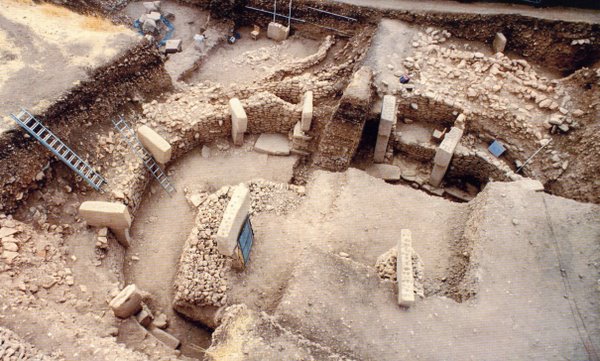
This has preserved the constructions, whether that was the intention of course difficult to say. The site itself pre-dates ceramics and pottery, but certainly with regards to it's siting i would have thought key considerations would have been the available limestone, good water supply that could be channeled and a source for the clay used in the mortar.
There will also be the question of what part the hill itself played in the site that developed around it, i would expect the oldest aspects of the site to relate to it,assuming it is a hill of course.
If it was up to me i'd be excavating the hill, but they seem to have prefered to plant trees on it
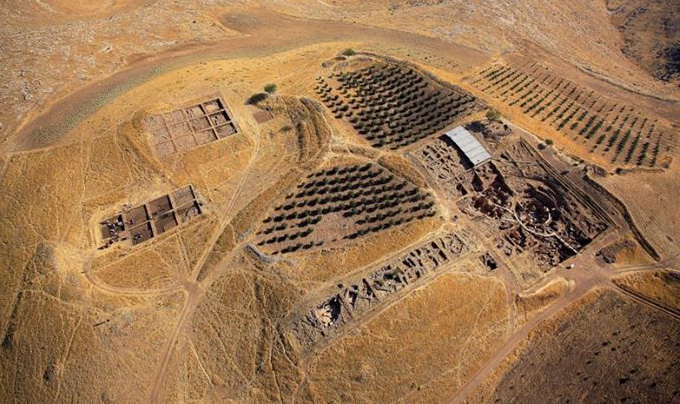
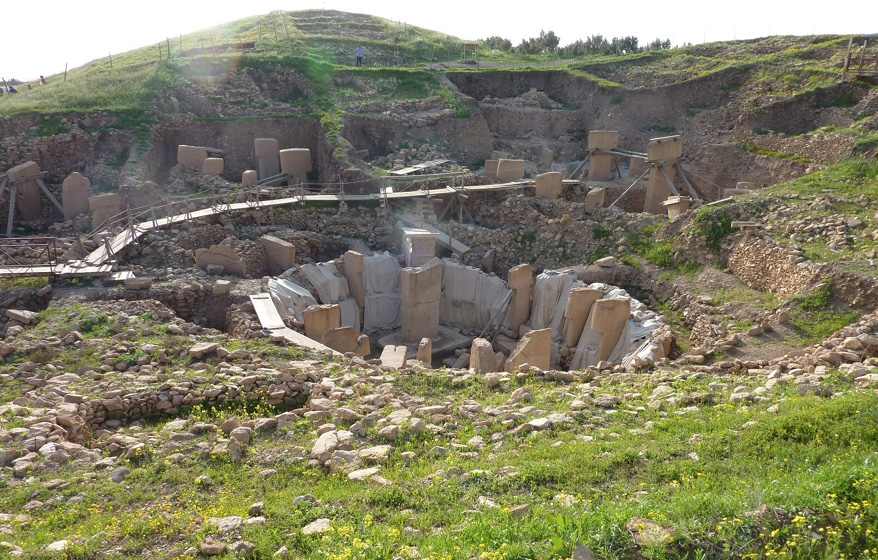
reply to post by KilgoreTrout
But there isn't any evidence for anything that needed to be fired at Gobekli Tepe, their mortar mix only involved clay and limestone slurry, as was the case with the Maltese concrete some thousands of years later, which only involved ground limestone and water.
reply to post by Oannes
Perhaps that's why they've kept quiet about the extensive usage at Gobekli Tepe, they don't want the whole concrete pyramids debate starting up again...
Yes it wasn't filled in with sand or Earth but the same material as used in construction, effectively concrete, which i guess makes it somewhat of a pain to excavate.

This has preserved the constructions, whether that was the intention of course difficult to say. The site itself pre-dates ceramics and pottery, but certainly with regards to it's siting i would have thought key considerations would have been the available limestone, good water supply that could be channeled and a source for the clay used in the mortar.
There will also be the question of what part the hill itself played in the site that developed around it, i would expect the oldest aspects of the site to relate to it,assuming it is a hill of course.
If it was up to me i'd be excavating the hill, but they seem to have prefered to plant trees on it


reply to post by KilgoreTrout
But there isn't any evidence for anything that needed to be fired at Gobekli Tepe, their mortar mix only involved clay and limestone slurry, as was the case with the Maltese concrete some thousands of years later, which only involved ground limestone and water.
reply to post by Oannes
Perhaps that's why they've kept quiet about the extensive usage at Gobekli Tepe, they don't want the whole concrete pyramids debate starting up again...
edit on Kam33177vAmerica/ChicagoWednesday1931 by Kantzveldt because: (no reason given)
Shiloh7
I expect new academics can't wait to start rewriting some of our past with more open minds and no egos to protect.
This is very true. It takes a new generation because the old generation is too concerned about having dedicated their lives to stuff that eventually gets outmoded.
Just replying here to find an excuse to bump the thread. The best threads are high-flag / low-reply. The worst ones are high-reply / low-flag. So the best threads have to be bumped now and then.
reply to post by Kantzveldt
We're clearly at cross-purposes, it's the gypsum in the plaster that requires fire treatment. Since clay was used as the binding agent in the terrazzo floors, gypsum would be surplus to requirements, but gypsum is included in the concrete at Malta. I am still reeling from that wiki page, they skip right past Jericho, and then from the Indus Valley straight to Greece by-passing Minoa. It's no wonder people have such a skewed idea of the Ancient world.
Anyway, I found a couple of good articles that discuss further the cultural similarities between the people who constructed GT and the settlements in Upper Mesopotamia. I find the prospect that the people travelled hundreds of miles on foot to get there amazing, especially when in relative terms most people these days would be horrified by the prospect of walking just a few miles. There is also the similarity to recent discoveries, based on isotope analysis, on how the people's of the British Isles also travelled long distances in order to get to Stonehenge. Unfortunately, given the conflict in the Near East in the past two decades we are unlikely to get as full a picture, it can only be imagined what has been destroyed.
www.academia.edu...
www.academia.edu...
About the trees...I wonder if they are to prevent soil erosion from damaging the site...pretty savvy if that is the case, it is probably going to be decades before they get to those areas of the tepe.
We're clearly at cross-purposes, it's the gypsum in the plaster that requires fire treatment. Since clay was used as the binding agent in the terrazzo floors, gypsum would be surplus to requirements, but gypsum is included in the concrete at Malta. I am still reeling from that wiki page, they skip right past Jericho, and then from the Indus Valley straight to Greece by-passing Minoa. It's no wonder people have such a skewed idea of the Ancient world.
Anyway, I found a couple of good articles that discuss further the cultural similarities between the people who constructed GT and the settlements in Upper Mesopotamia. I find the prospect that the people travelled hundreds of miles on foot to get there amazing, especially when in relative terms most people these days would be horrified by the prospect of walking just a few miles. There is also the similarity to recent discoveries, based on isotope analysis, on how the people's of the British Isles also travelled long distances in order to get to Stonehenge. Unfortunately, given the conflict in the Near East in the past two decades we are unlikely to get as full a picture, it can only be imagined what has been destroyed.
www.academia.edu...
www.academia.edu...
About the trees...I wonder if they are to prevent soil erosion from damaging the site...pretty savvy if that is the case, it is probably going to be decades before they get to those areas of the tepe.
edit on 19-3-2014 by KilgoreTrout because: (no reason given)
Skyfloating
I always expect to find regression rather than progression over time among these very ancient sites because of a completely different understanding of History and the descent of mankind over millennia. Why the "modern Academia" is continually surprised and "confronted with problems" over this, after having discovered numerous other cultures that began at their peak "from the beginnings", I don't know. Maybe its not a conspiracy, maybe they're just dumb as a rock.edit on 2014 by Skyfloating because: (no reason given)
Nope, because the sites don't show that. However, fringe believers make believe that they evidence to support this incorrect inference. Nevertheless it is not true.
No culture-civilization, 'springs out of nowhere'. As Catalhuyuck and GT show, there were pre-civilization going ons - going on!
lol
I only stop by here rarely if you reply it may days or weeks before I see it
new topics
-
Joe Rogan conspiracy (maybe)
ATS Skunk Works: 2 hours ago -
Results of the use of the Oreshnik missile system in Dnepropetrovsk
World War Three: 5 hours ago -
Nigel Farage now the Most Favoured UK Politician
Regional Politics: 6 hours ago
top topics
-
Little Johnny and Larry should team up
General Chit Chat: 12 hours ago, 10 flags -
Results of the use of the Oreshnik missile system in Dnepropetrovsk
World War Three: 5 hours ago, 10 flags -
Nigel Farage now the Most Favoured UK Politician
Regional Politics: 6 hours ago, 3 flags -
Will Us use alien technology to fight in ww3?
World War Three: 13 hours ago, 2 flags -
Joe Rogan conspiracy (maybe)
ATS Skunk Works: 2 hours ago, 2 flags
active topics
-
Results of the use of the Oreshnik missile system in Dnepropetrovsk
World War Three • 128 • : WeMustCare -
President-Elect DONALD TRUMP's 2nd-Term Administration Takes Shape.
Political Ideology • 240 • : WeMustCare -
Nigel Farage now the Most Favoured UK Politician
Regional Politics • 6 • : angelchemuel -
President-Elect TRUMP Picks Former Florida A.G. PAM BONDI to be U.S. Attorney General.
2024 Elections • 56 • : VariedcodeSole -
Well we know Putins ICBMs won't fail in their silos
World War Three • 209 • : Xtrozero -
Jaguar Rebrand Video Causes "WTF?" Moment - Seriously Weird
Automotive Discussion • 26 • : angelchemuel -
Post A Funny (T&C Friendly) Pic Part IV: The LOL awakens!
General Chit Chat • 7815 • : baddmove -
Joe Rogan conspiracy (maybe)
ATS Skunk Works • 2 • : watchitburn -
Little Johnny and Larry should team up
General Chit Chat • 3 • : bluesman023 -
Will Us use alien technology to fight in ww3?
World War Three • 11 • : BeyondKnowledge3

